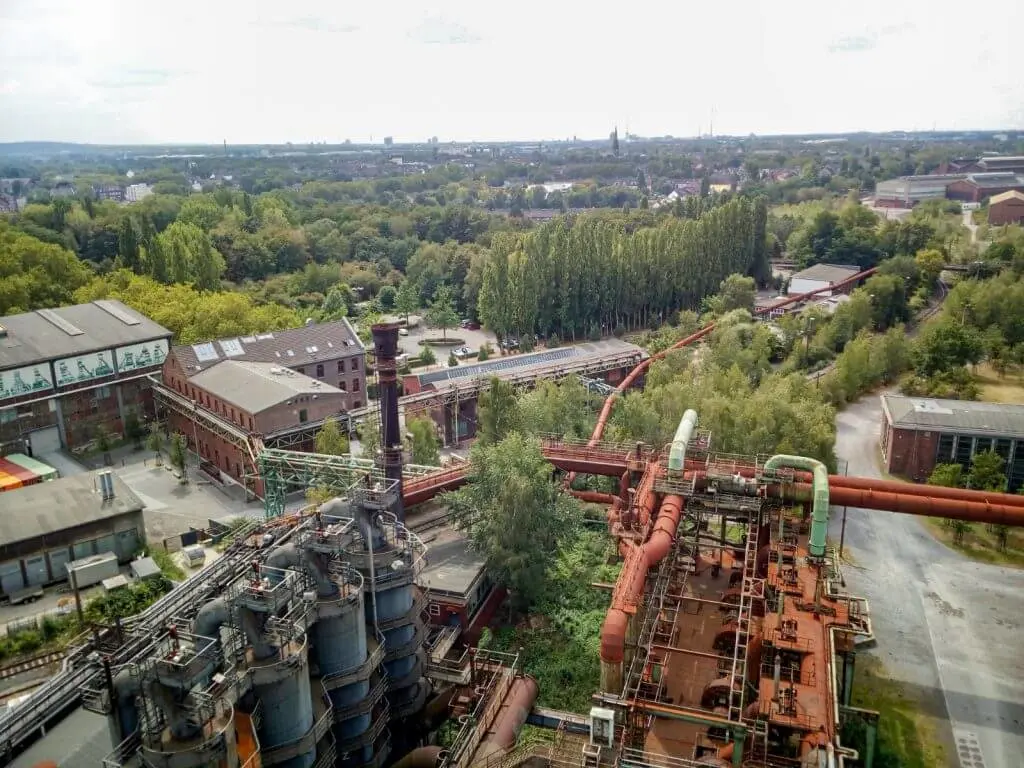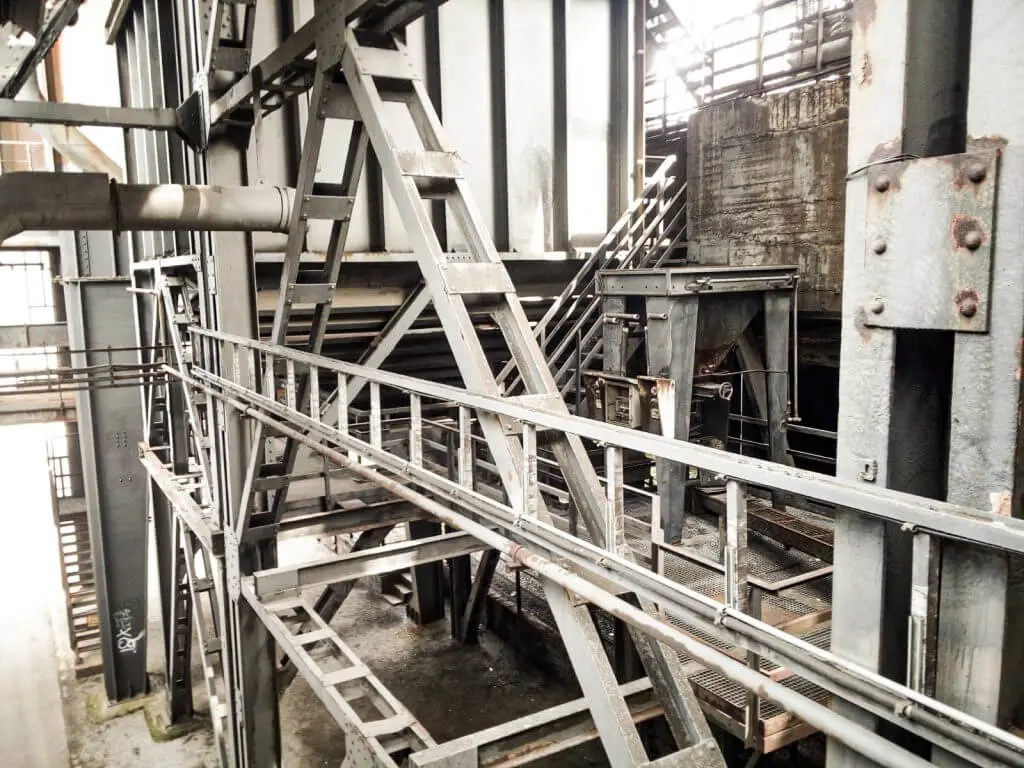Landschaftspark, Duisburg, Germany is a nature reserve with a difference. One that answers the question: 'What can you do with a heavily polluted brown site?' Whilst many think that the best solution is to simply tear it down and start again, Landschaftspark proves that there is another way.
Landschaftspark (Landscape Park), Duisburg, Germany is converted from a pig iron factory: Thyssen Ironworks...
The 180-hectare site is now home to over 700 species of plant, 45 species of birds, and various bats, toads, salamanders, and insects. Visitors can explore to site for free and have the opportunity to view from the top of the blast furnace. The park was opened in 1994 after locals fought to save the landmark.

Nature is reclaiming the old iron-works.
The park
Landschaftspark (Landscape Park) is located just north of Duisburg in north-west Germany. The converted pig iron factory: Thyssen Ironworks, is a Mecca for any budding abandoned building explorer and best of all, you can get on-site free and legally! The once-abandoned iron-works now boasts over 700 plant species on its 180-hectare site.
In an age where powerplants have ski slopes instead of rooves and skyscrapers are transformed into vertical forests. Landschaftspark demonstrates that there is more than one solution to making architecture green.
In the evening the park is transformed with colored lights that highlight the details of the structure and draw visitors through passageways they may otherwise have overlooked during the day. The park also features diving, climbing, cycle routes, and even a cinema.

The view from the top of Blast Furnace 5.
The view from the top
At the top of Blast Furnace 5 (the tallest of the towers), there is a viewing platform, that is not for the faint-hearted! It offers visitors an incredible view over the 180-hectare park. A large, rusted industrial pipeline cuts through in sharp contrast the green, organic shapes of the treetops. Visitors also have the opportunity to peer down the shafts that would have transported the raw materials to the top of the furnace. Enough to give you jelly legs!
The staircase to the top snakes around the blast furnace and through the cooling tubes. The old route to the top (a ladder crudely attached to the outside) is also clearly visible. It really gives you a sense of what it would have been like to work on a cold, windy, and icy day.

The view from the top of the blast furnace is not for the fainthearted.
Bunker gardens
The old storage area for the raw materials has been converted into stunning, walled gardens -- 'The Bunker Gardens'. Visitors can have a birds-eye view of these by walking along the footpath, created from a converted railway track that hovers above the gardens. As they do they are surrounded in a cascade of reds and greens from the creepers that are slowly reclaiming the metal structure.

Reclaimed by nature. Creepers are taking over the steel structure.
Surrendering to the elements
Dotted around the park, old relics of the plant's former life can be found, growing more beautiful as the rust bites into the metal. Near the entrance, a ghostly 'torpedo' train can be found still resting on its tracks.
In other locations the concrete is crumbling away, revealing the beauty of the iron structural reinforcements within.

Landschaftspark Duisburg-Nord covers over 180 hectares.
Nature
The park also boasts a whole host of animals from salamanders, frogs, and toads making their way across the paths. The crystal clear river is teeming with fish. 45 species of bird have been noted on-site and at night, several species of bat fly overhead.
One of the reasons for the high level of diversity in Landschaftspark is that the site was left untouched for several years. This allowed nature to begin to claim back the heavily polluted area. To maintain this diversity, a section of the site is reserved exclusively for animals, visitors are not allowed.
A series of waterways cut across the park. These are fed through a system of water shoots and rainwater collection methods that ensure the river never runs dry, even during the summer months. Wastewater is now fed through an underground pipe instead of through the river as it was before.
A wind turbine is used to improve the water quality and to pump water the bunker gardens. The wind turbine itself cuts a hauntingly beautiful silhouette in the sky.

Visitors are free to explore the old ironworks.
History
Thyssen Ironworks was open from 1903 -- 1985. During its 82 years of operation, it produces 37 million tonnes of pig iron. Its site was chosen as it was adjacent to coalfields.
The last shift at Thyssen Ironworks was on 4 April 1985. Despite the 80s bringing uncertainty to the industry, the closure of the plant came as something of a surprise for the workers.
After its closure, many wanted to see the buildings torn down. However, the ironworks was viewed as an iconic part of the skyline. Local residents were reluctant to let go and formed a group that fort to preserve the landmark.
In 1991 the renovations began and 1994 Landschaftspark Duisburg opened its gates. Prof. Peter Latz had the honor of the winning contract. He has also completed several similar renovation projects including Parco Dura, Turin, Italy and Tel Aviv's Hiriya "trash mountain", Israel.

Left to rust the iron works has gained a beauty in its old age.


Nature is reclaiming the old refinery.

An old conveyor belt used to create bars of iron.



Landschaftspark transforms at night with lights.

Landschaftspark transforms at night with lights.
Why not design your own park?
It's easy with BricsCAD Shape. Download free for life at www.bricsys.com. Then make the effortless move to BricsCAD BIM. Freedom of choice, plus perpetual (permanent) product licenses that work with all languages, in all places. You'll love what we've built for you with the BricsCAD® product family.

